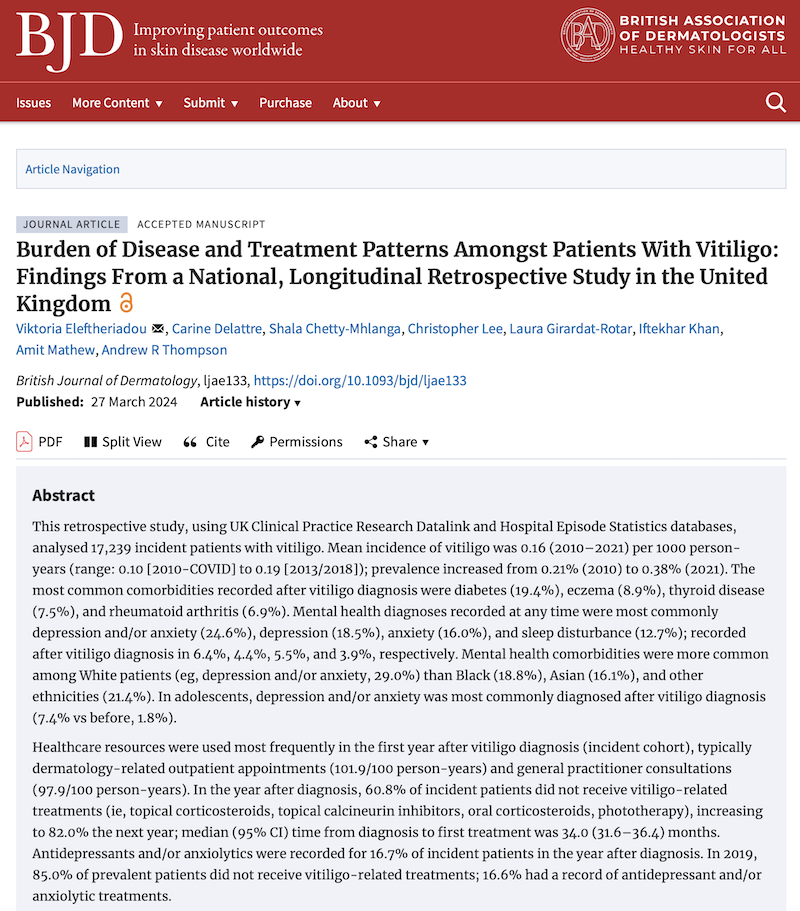New
Vitiligo: A Silent Struggle
A recent study "Burden of Disease and Treatment Patterns Amongst Patients With Vitiligo: Findings From a National, Longitudinal Retrospective Study in the United Kingdom" has shone a light on vitiligo.
It found that in 2021, about 0.38% of people had vitiligo, but in 2019, a staggering 85% of those with the condition hadn't received any form of treatment. Even when treatments were prescribed, patients often waited an average of 34 months after diagnosis before starting. The treatments they did receive usually involved creams or oral medications aimed at reducing inflammation and immune system activity.
The study also revealed that mental health issues, like depression, anxiety, and sleep disturbances, were quite common among people with vitiligo, affecting around 24.6% of patients. Interestingly, white patients reported these problems more frequently than those of Black, Asian, or other ethnic backgrounds. In the year following their vitiligo diagnosis, nearly 17% of new patients were treated with medications for anxiety or depression.
This research suggests that vitiligo is often not taken as seriously as it should be, with many patients not receiving timely treatments. This could be because the treatments available today don't always work well. It highlights a significant gap in care and support for those with vitiligo, emphasizing the need for better treatments and a more proactive approach to this skin condition and its psychological impacts.
FAQOther Questions
- Vitiligo and hearing loss: any connection?
Vitiligo is primarily recognized for causing skin discoloration, but it can also impact melanocytes in unexpected areas, such as the inner ear. This raises questions about wheth...
- Is there a special diet for vitiligo?
Recent research highlights the potential of diet and nutrition in managing vitiligo, offering an alternative where traditional therapies may be lacking. However, the relationshi...
- How long does it take to treat vitiligo?
Vitiligo, a condition characterized by the loss of skin pigment, can be unpredictable in both progression and treatment. The time it takes to treat vitiligo varies significantly...
Though it is not always easy to treat vitiligo, there is much to be gained by clearly understanding the diagnosis, the future implications, treatment options and their outcomes.
Many people deal with vitiligo while remaining in the public eye, maintaining a positive outlook, and having a successful career.
Copyright (C) Bodolóczki JúliaBy taking a little time to fill in the anonymous questionnaire, you can help researchers better understand and fight vitiligo.

